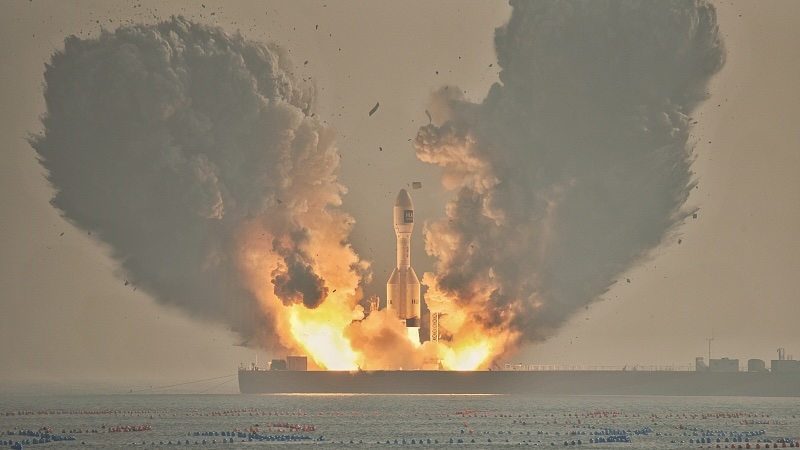China has a rich history in rocketry. It’s even found its place into Chinese legends with the wonderful tale of Wang Tu, who allegedly strapped himself to a chair adorned with rockets to experiment with rocket flight. The story goes that he launched and was never seen again! More recently however, a Chinese company has claimed to have launched the ‘World’s most powerful solid rocket’ capable of producing 600 tonnes of thrust and carrying 6,500kg into low Earth orbit.
The earliest rockets were made using solid propellants, typically materials like gunpowder. The predecessors to modern rockets were used in warfare by the Chinese, Indians, Mongolians and Persians as far back as the 13th Century. During the 20th Century, liquid propellants were introduced which offered far more control and efficiency but solid rockets are still used today chiefly due to the ease of use and longevity of the fuel when in storage.
The Chinese aerospace company Orienspace has just launched Gravity-1 a solid fuel propelled rocket. The launch, from a modified cargo ship in the Yellow Sea, just off the coast of Haiyang City has sent three Yunuao-1 meteorology satellites into orbit. Before take off, the short and stubby rocket stood 30 metres high and weighed in at 400 tonnes.
Unusually for modern rockets, Gravity-1 has three core stages and four boosters, all powered by solid fuel. Many modern rockets have a combination of fuel types or favour liquid propellent due to its controllability. In addition to the engines, it has flexible swinging nozzles to aid in flight control. One of the stages has been designed so that it can be adjusted to accomodated liquid fuel to improve its payload capacity.
It’s not uncommon now to see ships involved in space exploration. Space X has demonstrated this with the landing of its Falcon-9 first stage enginges. The Chinese teams have favoured sea based launch aboard a converted cargo ship because it offers greater flexibility. The weather has often forced launches to be cancelled so a ship based launch gives mobility and a greater chance of success.

Just whether Gravity-1 is the largest solid rocket ever built will I’m sure be the cause of many debates. After all, the solid rockets of NASAs Space Launch System can deliver 1,632 tonnes of thrust. Regardless, it’s great to see another country investing further in rocket technology and it will be interesting to see how this unfolds in the months and years ahead.
Source : China launches world’s most powerful solid fuel rocket

